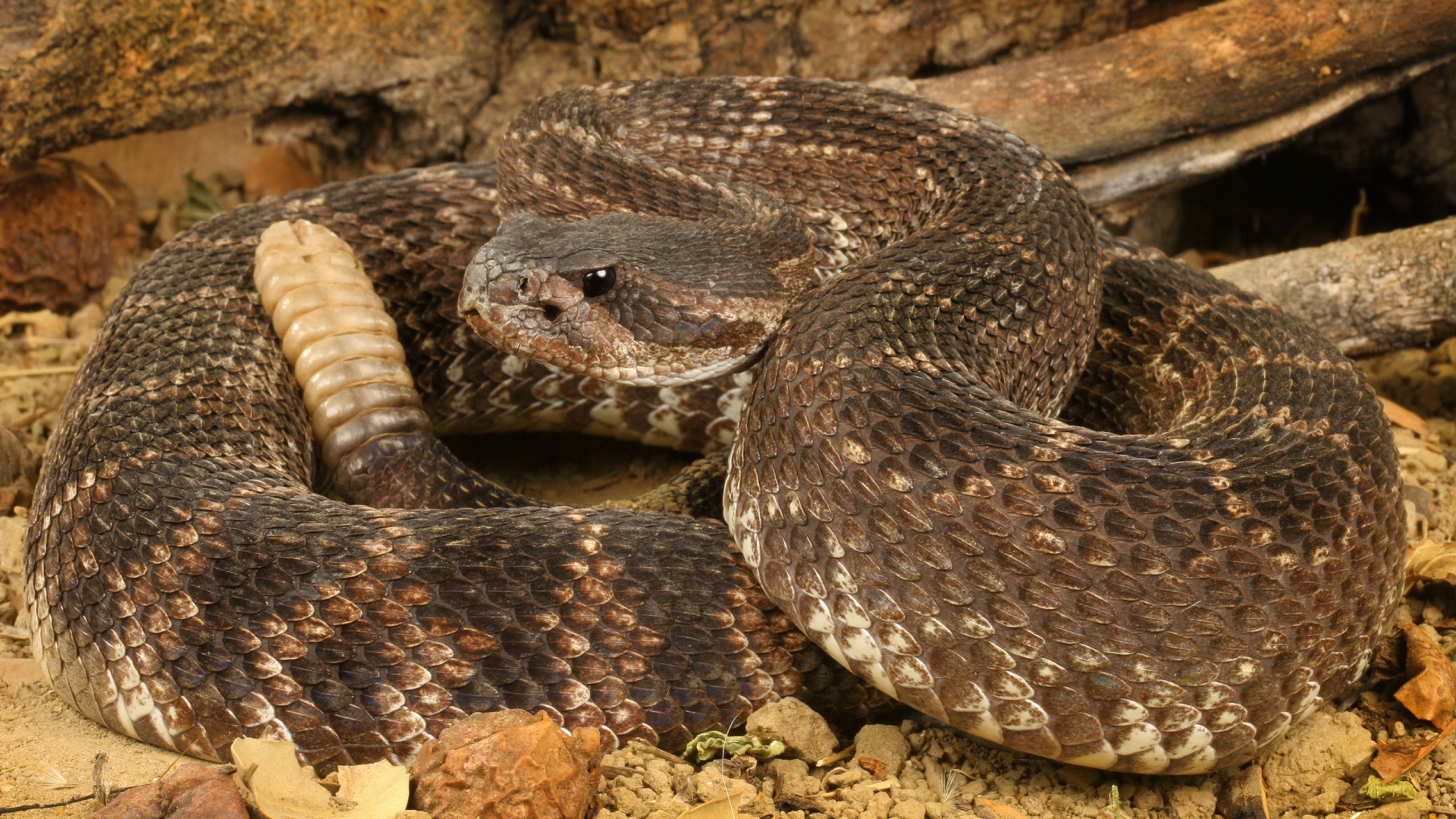How do rattlesnakes rattle?
The rattlesnake's rattle is nothing like a maraca.

The sound of a rattlesnake's rattle is perhaps the most frightening sound you could hear on a hike. But how and why do these snakes make this iconic noise?
"Everything tells us that they rattle to alert predators," David Pfennig, a professor of biology at the University of North Carolina at Chapel Hill, told Live Science. Rattlesnakes may seem like fearsome creatures, but they are not at the top of the food chain. When a predator or a beast that could trample it — like a coyote or a bison, respectively — approaches, the rattle warns the predator to stay away or else it might get the fangs.
However, scientists didn't always know this. According to Pfennig, until the 1950s, there was a lot of debate about what the rattle was actually used for. Some thought it could be used to attract mates.
Instead, the rattle works as a so-called aposematic signal, meaning that instead of being quiet or camouflaged, the animal has a trait that makes it stand out to its predators. It may sound counterintuitive, but many animals use aposematic signals. Poison dart frogs are brightly colored, for example, and bees have distinctive yellow and black stripes. But being threateningly conspicuous doesn't work if the threat is empty. Behind the dart frog's bright colors is an incredibly potent poison, behind the bee's stripes is a stinger, and behind the rattlesnake's rattle is a set of venomous fangs. Predators that can learn to associate the signal with the threat live to see another day.
Related: What are the world's deadliest snakes?
In 2016, Bradley Allf, then an undergraduate student in Pfennig's lab, and colleagues investigated the evolution of the rattlesnake's rattle. They found that the ancestors of rattlesnakes likely shook their tails when under threat long before rattles appeared on rattlesnakes.
Allf looked at the tail-shaking behavior of 56 snake species and found that even though rattlesnakes were the only ones in the study to have rattles, most snakes in the study rapidly flick their tails when threatened. What's more, snakes more closely related to rattlesnakes tended to shake their tails faster and more frequently than species more distantly related to rattlesnakes. By the time rattles evolved, the snakes already knew how to use them.
Get the world’s most fascinating discoveries delivered straight to your inbox.
"Usually when snakes or other reptiles shed, they get rid of their old skin and replace it with new skin from underneath," Boris Chagnaud, a professor in the Faculty of Natural Sciences at the University of Graz in Austria, told Live Science. "It's the same for the rattlesnakes, except that at the tail end, one piece of skin remains attached, which means that every time they shed, they get one more keratinous segment on the rattle, which is the part that generates the sound." (Keratin is a protein that's also found in our hair, nails and skin.)
These loosely attached dead skin segments are hollow and filled with air. Instead of rattling pieces of keratin inside the rattle like a maraca, the segments click together to make the famous rattling noise. And that rattling behavior is more sophisticated than it might seem.
In 2021, Chagnaud was part of a team that discovered that rattlesnakes create a clever auditory illusion with their rattles. They found that rattlesnakes begin rattling their tails at rather low frequencies — at least at first. But if the predator — or, in the case of their experiment, a human volunteer approaching a virtual snake — began to move toward the snake, the rattling would become progressively faster.
It's like the audio alarm in a "car that beeps faster as you approach a wall," Chagnaud said.
But here's the trick: If the predator continues to approach, the snake's rattling frequency will suddenly increase by 20 or 30 hertz, creating the illusion that the snake is now much closer than it actually is.
For an animal that can't even hear its own rattle, rattlesnakes sure make effective use of that sound.

Cameron Duke is a contributing writer for Live Science who mainly covers life sciences. He also writes for New Scientist as well as MinuteEarth and Discovery's Curiosity Daily Podcast. He holds a master's degree in animal behavior from Western Carolina University and is an adjunct instructor at the University of Northern Colorado, teaching biology.



